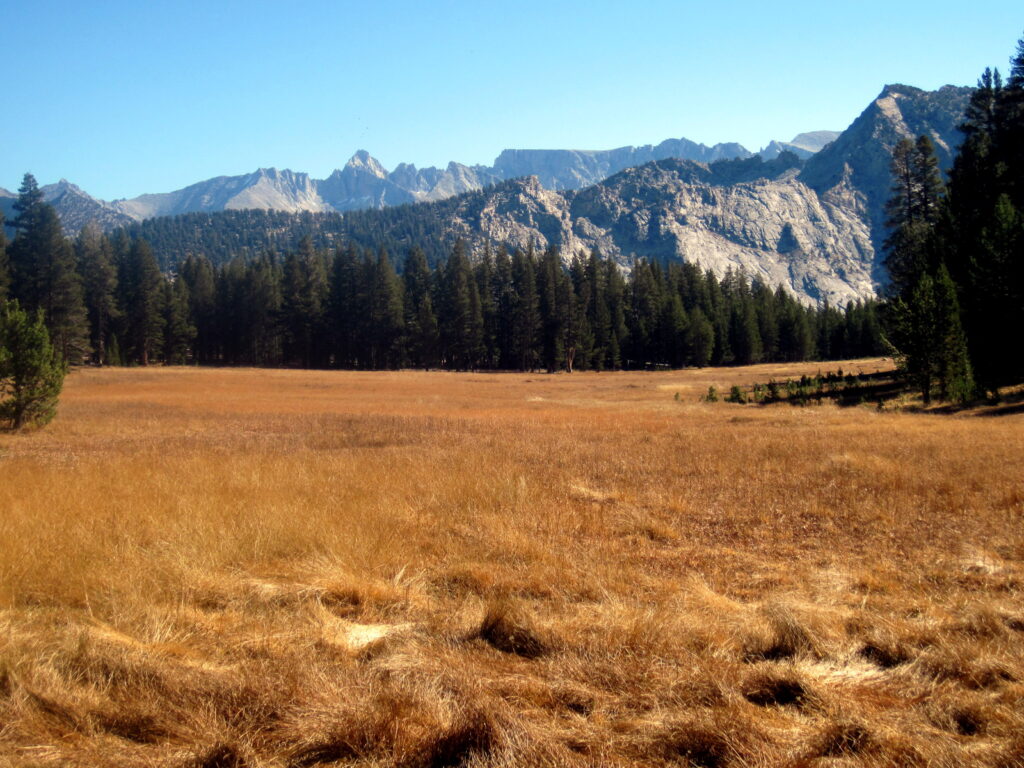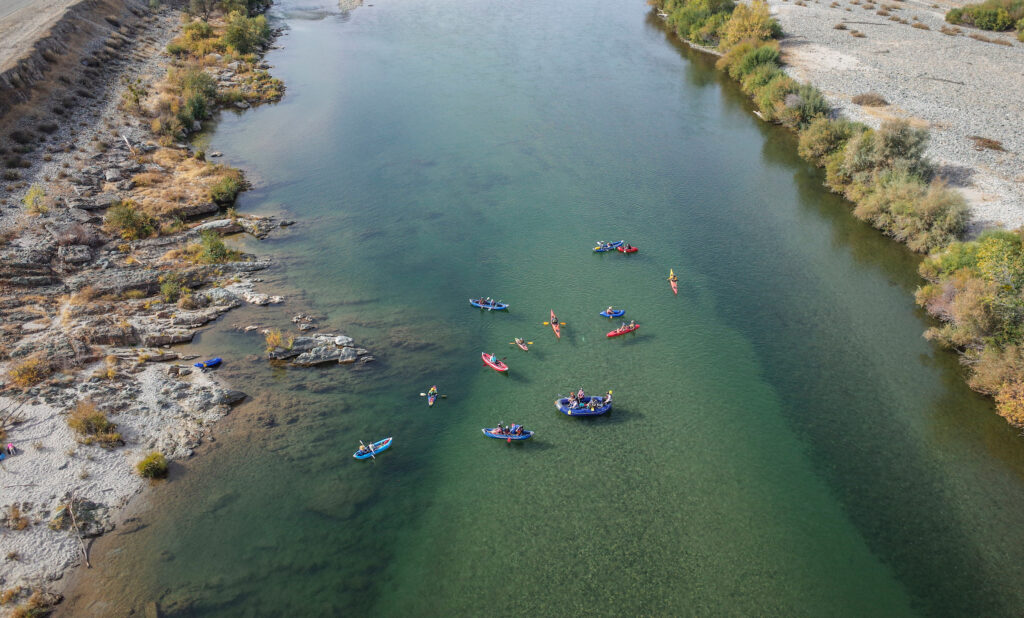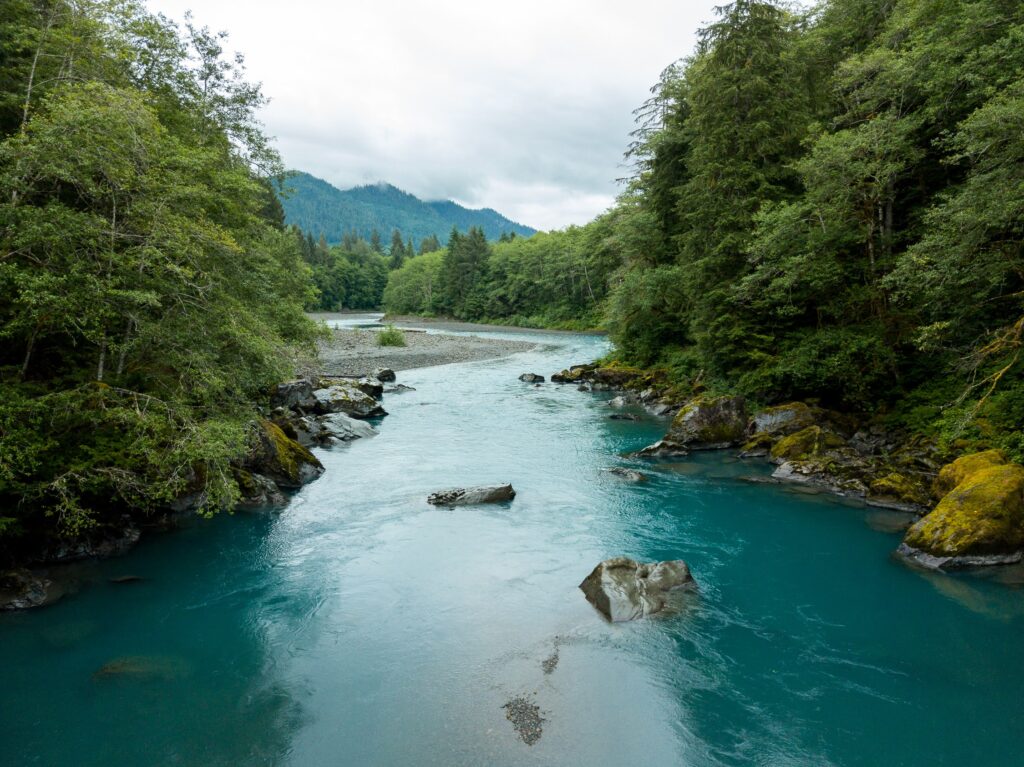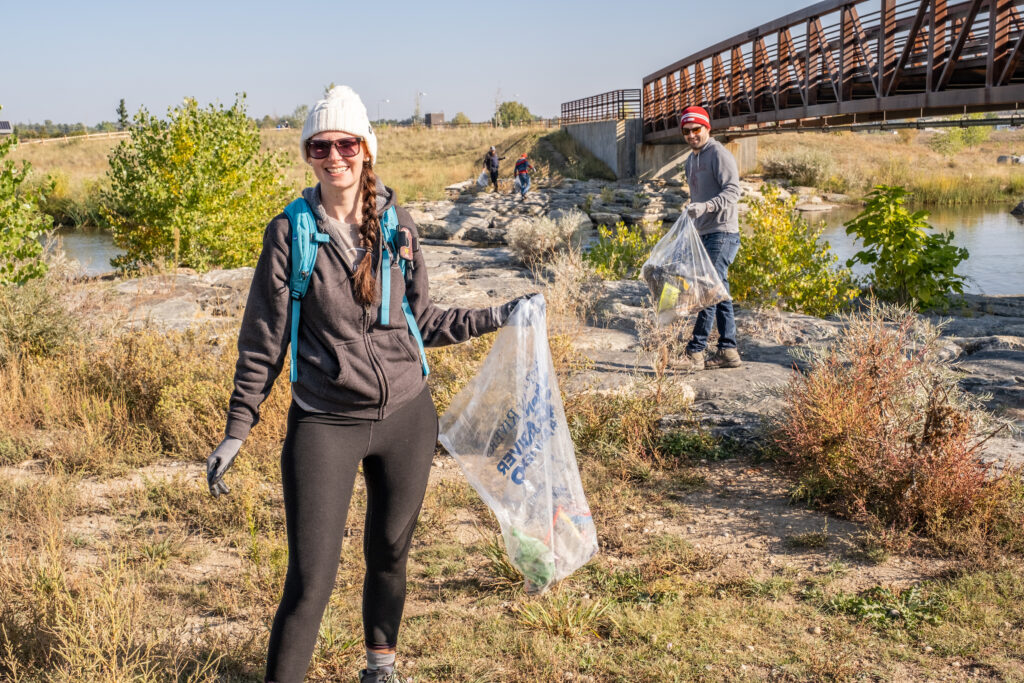What’s the Formula to Helping Restore the Waterways?
American Rivers teamed up with Keurig Green Mountain employees in Suffolk, VA and the Nansemond River Preservation Alliance to enhance a 100-foot buffer along Bennett’s Creek, a tributary of the Nansemond River.

At the end of April, American Rivers teamed up with Keurig Green Mountain employees in Suffolk, VA and the Nansemond River Preservation Alliance to enhance a 100-foot buffer along Bennett’s Creek, a tributary of the Nansemond River. To talk more about the work we did and the importance of buffers, I’ve asked Elizabeth Taraski of Nansemond River Preservation Alliance to guest blog.
According to the Virginia Department of Health and Department of Environmental Quality, Suffolk’s waterways are impaired due to non-point source pollution, not caused by a specific source or single storm event. These contaminants come from nutrients in fertilizers used on lawns, animal waste, herbicides and pesticides, sediment and trash, oil, grease and heavy metals in runoff from roofs, driveways, streets, etc. Research has shown that a 100-foot buffer reduces sediments and nutrient levels in stormwater runoff by 75% and 40%, respectively. By curbing the amount of pollutants in stormwater runoff before entering the waterways, buffers help create cleaner rivers and also provide a habitat for wildlife and plants.
Over the past two years Keurig Green Mountain and American Rivers have teamed with the Nansemond River Preservation Alliance (NRPA), Suffolk’s city-wide environmental non-profit organization, and the City of Suffolk Parks & Recreation Department to enhance the 100-foot buffer adjacent to Bennett’s Creek. This buffer enhancement project entailed planting native trees and shrubs and also spreading a thick layer of mulch across riverside lands. The buffer area slows down the speed with which surface water runs over the land. By slowing the runoff, the water is able to filter through the surface of the ground and be taken up the plant roots. This helps prevent the formation of channels and limits the pollution that reaches the waterway. The roots of the vegetation bind the soil, preventing erosion from occurring in close proximity to the water feature or wetland. A vegetated buffer also helps to prevent erosion through protecting the ground surface from rain impact.
[metaslider id=30968]
When enhancing or establishing buffers, planning is critical. The project has taken place over a two-day period in the spring, a good time to plant native trees and shrubs. NRPA and the city work together and select the native trees and shrubs that will thrive in the selected area. The day begins with a brief presentation by NRPA explaining the significance of the 100-foot buffer and the long-lasting value of their team efforts. After an energetic sound off, the volunteers go to work. In 2015, 50 volunteers planted 85 trees/shrubs and spread 25 yards of mulch. This year, 70 volunteers planted 175 trees/shrubs and spread 30 yards of mulch.
The project’s benefits are plentiful. Contaminants are being filtered; marine life, birds, insects and grasses can flourish; Keurig Green Mountain volunteers enjoy a day outdoors working together to make a difference in the quality of life in their community. Smiles are all around.



